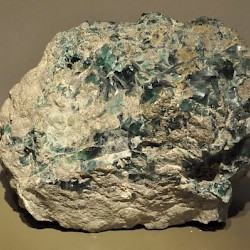Jona Lendering
Jona Lendering read history at Leiden University (MA 1993), specialized in Mediterranean culture at the Amsterdam Free University (MA 1996), and worked at excavations in Holland (Riethoven) and Greece (Halos). After teaching historical theory and ancient history at the Free University for several years, he was one of the founders of a school for history teaching, Livius Onderwijs. Born in Amsterdam, it has now spread to auxiliary locations in Bussum, Dronten, Gouda, Haarlem, Hoorn, Schagen, Zaanstad, and Zoetermeer. As of 2013, Livius Onderwijs has eight teachers, about 500-600 students a year, and offers tours to countries like Italy, Turkey, Iran, and Lebanon. The field trips help to etch into the students' minds some of what they've learned at the school.
Because history is for a large part telling a story, something you do best in your own language, Lendering prefers to publish in Dutch journals. However, he has contributed to the Bryn Mawr Classical Review and Ancient Warfare, while he is the founder of Ancient History Magazine. He is also the publisher and editor of the on-line publication of the Babylonian Chronicles of the Hellenistic Period, a set of important cuneiform sources for the history of the Seleucid and Parthian Near East, transcribed, translated and commented on by Bert van der Spek of the Free University Amsterdam and Irving Finkel of the British Museum. A publication as book is in preparation.
Lendering has written several books and maintains a blog in Dutch. He is the author of several books, including Edge of Empire and Consensus and Crises. For the Livius website, which has received several awards, he collaborates closely with Bill Thayer of LacusCurtius. Lendering is also the webmaster of two daily blogs, the MainzerBeobachter.com and Grondslagen.net.
There are 9380 items in Jona Lendering:
26th Dynasty (Saites)
Saites: name of the 26th dynasty of Egyptian pharaohs, who opened up their country to foreign traders, mercenaries, and settlers.Kings Mencheperre Necho I 672-664 Wahibra Psamtik I (Psammetichus I) 664-610 Wehemibra Necho II 610-595 Neferibra Psamtik II (Psammetichus II) 595-589 Ha'a'ibra Wahibra (Apries) 589-567 Chenibra Amose-si-Neith (Amasis) 570-526 Anchkaenra Psamtik III (Psammetichus III) 526-525 History …29th Dynasty (Mendesians)
Twenty-Ninth or Mendesian Dynasty: rulers of Egypt in 398-378 BCE. Map of Lower Egypt (fifth-fourth centuries BCE) After the revolt of Amyrtaeus…30th Dynasty (Sebennytians)
Thirtieth or Sebennytian Dynasty: last dynasty of indepent Egypt, ruling from 379/378 until the Achaemenid reconquest in 343 BCE. Nectanebo I The…The Stela of Mesha
The Stela of Mesha: building inscription from ancient Moab, famous because it describes events from the history of Israel that are also described in the Bible. …The Siloam Inscription
Siloam Inscription: inscription from Jerusalem, now in the Istanbul Archaeological Museum, documenting the cutting of a water tunnel. Siloam Inscription After the…3rd Dynasty
Third Dynasty: name of the first kings of Egypt's "Old Kingdom".Summary Pyramid of Djoser Memphis becomes the main residence of the kings…4th Dynasty
Fourth Dynasty: name of the second dynasty of Egypt's "Old Kingdom", the builders of the famous pyramids.Summary Khufu (Cheops) King Snefru build three…5th Dynasty
Fifth Dynasty: name of the third dynasty of Egypt's "Old Kingdom".Summary Pyramid of Userkaf King Userkaf builds a pyramid at Saqqara and dedicates…6th Dynasty
Sixth Dynasty: name of the last kings of Egypt's "Old Kingdom". During their reign, Egypt became more fragmented and the Sixth Dynasty marks the beginning of the First Intermediary Period.Summary The reign of king Pepy I is a period of prosperity Pepy II was…7th and 8th Dynasties (Memphis)
Seventh and Eighth Dynasties: name of the kings in Memphis during Egypt's First Intermediary Period.General situation Egypt was, after the demise of the Old Kingdom, divided until it was reunited by the Eleventh Dynasty, which had started as the local dynasty in Thebes. MEMPHIS HERACLEOPOLIS THEBES Eleventh…9th and 10th Dynasties (Heracleopolis)
Ninth and Tenth Dynasties: name of the kings in Heracleopolis during Egypt's First Intermediary Period.General situation Egypt was, after the demise of the Old Kingdom, divided until it was reunited by the Eleventh Dynasty, which had started as the local dynasty in Thebes. MEMPHIS HERACLEOPOLIS THEBES Eleventh…

A big lump, containing some inhomogenuous pieces of ancient glass |